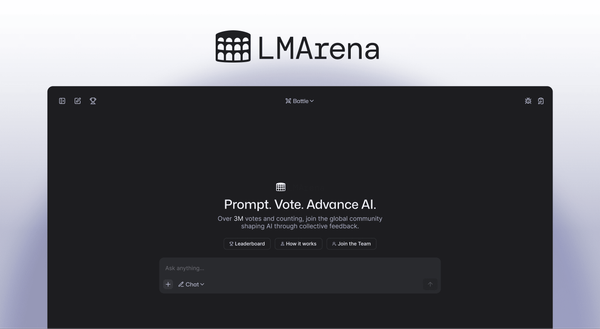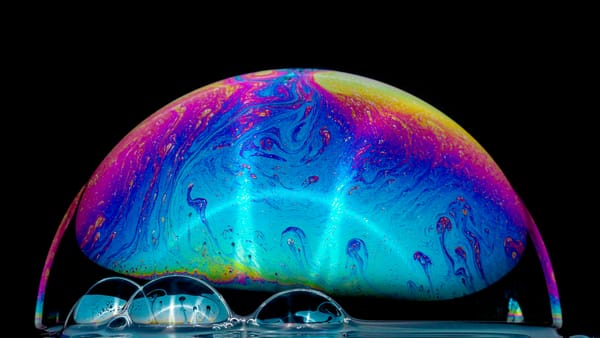What Figma plans to do inside Adobe
CEO Dylan Field on antitrust, AI, and the future of design

Believe it or not, Dylan Field tells me over Zoom today, when he started Figma he was only thinking about one thing: making cool design tools. In was 2012, and Field and co-founder Evan Wallace had the idea of building design software for the web browser — making the design process live, interactive, and collaborative — in ways it hadn’t really been in software before.
The idea was much easier to imagine than it was to build: Figma was building in stealth mode for three years before its first public preview. But the hard technical work paid off: Figma was a hit with designers almost immediately, as the real-time collaboration it enabled made design processes — particularly software design processes — much more efficient than they had before.
The company’s user base grew accordingly, and by this year Figma was out-competing design giant Adobe among design teams at Microsoft and other companies. And so it was not particularly surprising when Adobe said this month that it intends to acquire Figma, keeping it as an autonomous unit within the company, with Field remaining as CEO.
What was more surprising, perhaps, was the $20 billion Adobe offered: 40 times Figma’s current annual revenue run rate, and one of the largest startup acquisitions ever. Investors have been skeptical about the deal; Adobe’s stock price is down sharply since the acquisition was announced, whether due to sticker shock or fears that Lina Khan’s Federal Trade Commission will block the deal on the theory that it’s anticompetitive. (She has sued to block much smaller and arguably less consequential deals than this one.)
I last wrote about Figma here in April 2021, as the company introduced its FigJam virtual whiteboard and Field navigated his team into a hybrid in-person and remote workplace. When news of the acquisition hit, I wondered how Field planned to navigate everything that’s now in front of him: antitrust issues, keeping control of his product road map, and whatever DALL-E and other AI tools might mean for the future of design.
Highlights of our conversation follow; this interview has been edited for clarity and length.
Casey Newton: Are you tired of talking about this acquisition yet?
Dylan Field: I’m just tired in general (laughs).
So any time a beloved tool gets bought, users worry that this could be the beginning of the end, or at least of a slow decline. What’s your case that Figma can keep innovating inside a bigger company?
First of all, autonomy. Second of all, I’m not going anywhere. Figmates are stuck with me.
And I’m really excited about what’s ahead — I think this is our opportunity to like press the gas even more. We’re currently playing in the product development world; we're pretty excited about what we can do to accelerate on productivity use cases.
People are really wanting more creative assets: So like, for example, 3D video, imaging, vector illustration. These are all things that people are requesting in the context of product design. And the ability to then take those and go into creative use cases too, and build creative tools that are web-first, browser-first, collaborative — I'm pretty excited about that. And so I feel like this will be an unlock for us. And make it so that not only can we do what we wanna do faster, but do more of it as well.
I still think of Figma as mostly a product design tool; I haven’t thought about it as much of a productivity tool. What do you hope to do there? And what do you hope is the ultimate outcome for Figma inside Adobe?
I put it in the blog post for the acquisition announcement, but the original vision statement for Figma was to eliminate the gap between imagination and reality. We've talked about that before. You were like, “a little corny, Dylan!”
[I don’t remember saying this but can’t deny it sounds like something I would say — Ed.]
I think it’s kind of returned to that — a return to this idea of, how do you take stuff inside of your brain, and get it on the screen, and do that across a variety of mediums?
On the productivity side, there's a lot that's going to be possible there. Creativity and productivity are starting to merge more. I think this is a general trend: a lot of tools are becoming easier to use, and more people have access to them. That's a good thing. So it's natural for people to want to make their presentations, their white boarding, and their documents better designed. And also have all sorts of creative assets. How do we make it so they're able to do that? And let them make stuff and do things that normally would take 12 hours in two minutes?
In fairness to me, I don't think I would have called your mission statement corny had I used DALL-E before then. But now I live in this world where I just type what I want the illustration for my newsletter to be, and then I have it within seconds.
This stuff has been on my mind, though, because you can now just sort of speak design into existence in a way that you weren't able to before. How are you thinking about AI in what you're doing?
I think that we'll have to figure it out, and what that means for our platform.
I think there's just a ton of possibility here — it feels like kind of the early 90s of the internet in a way that I think is very exciting. And I also put this in the blog post — I feel a deep sense of responsibility to figure out the best way for creatives to utilize this productively. And for it to be a collaboration between AI and humans versus … something else.
And I think that this can supercharge creativity. It can really help people express themselves. But it's going to be a lot of change. And I think that it'll be not just in creative tools, not just in design tools or productivity tools — it'll be everywhere. All of software. I think that it this is going to be a really interesting and exciting next five years.
Shifting gears: Lately we’ve seen the FTC express a great deal of skepticism about big acquisitions, arguing that they reduce competition and could lead to price increases or other harms for consumers. What’s your case this is good for the market?
First of all, we're gonna give our users a ton more functionality, and I think that it'll be really good for our customers. There's not a price increase here — we're doing everything we can to keep prices the same, even in an inflationary environment.
And, we're keeping it free for education. That's been a critical thing that we've talked about with Adobe, and they've been all in on.
I think this is really good for ecosystem, honestly. We'll show that over time. We'll have to make sure that we we show our customers and the community that we're gonna continue to not just innovate, but innovate quickly, and pick up the pace and do more than we have done in the past, And that’s a challenge, but it’s one I’m down to sign up for.
Finally, have there been any stories about the acquisition that outraged you, that you would like to answer once and for all right now?
(Laughs) You know, I think the amount of misinformation over anything that becomes an event is high. I already knew that you should probably shouldn't believe everything you read online. But being part of an event like this definitely reinforced that for me. It's been interesting to have that correction.
Governing
- Meta said it had taken down the first known effort from China to interfere in US politics and the midterm elections. The effort was described as “limited” and “clumsy”; China was caught “using profile pictures of men in formal attire but the names of women.” (Steven Lee Myers / New York Times)
- The Securities and Exchange Commission fined Oracle $23 million for violating laws against bribes for a second time. The company had allegedly created “off-book slush funds” to win business in India, Turkey, and the UAE; remember when this company almost came into possession of TikTok after Larry Ellison hosted a fundraiser for Donald Trump? (Ashley Capoot / CNBC)
- TikTok has struggled to make inroads while lobbying Republican lawmakers; despite spending millions and hiring the former political director of the House minority leader. Also, CEO Shouzi Chew subjected himself to the annual Congressional Football Game last week. (Alex Barinka and Emily Birnbaum / Bloomberg)
- TikTok users who struggle with eating disorders say they continue to see posts related to unhealthy eating despite attempting to tune the app to avoid them. (Julie Jargon / Wall Street Journal)
- The rise of image-generating AI tools like DALL-E and Stable Diffusion has drawn attention to risks that private images might wind up in their training data, and users have little recourse if they wish to opt out. (Chloe Xiang / Vice)
- A look at the race for secretary-general of the International Telecommunications Union, which pits a US State Department candidate against a Russian challenger who could accelerate the splintering of the internet. (Justin Ling / Wired)
- I just really enjoyed this sentence: “Bungie has been countersued by the popular cheat maker AimJunkies over claims that Bungie violated the DMCA on AimJunkies cheats, hacked one of their contractor’s computers, and violated copyright law by reverse engineering the software to build countermeasures against it.” (Renata Price and Lorenzo Franceschi-Bicchierai / Vice)
Industry
- Meta is testing a new account switcher to let you navigate back and forth between your various Facebook and Instagram accounts. (Mitchell Clark/ The Verge)
- Instagram is testing a home feed without a shopping tab. (Mia Sato / The Verge)
- Some Instagram creators say the brand marketplace designed to connect them with advertising opportunities hasn’t yet generated any leads. (Sydney Bradley / Insider)
- Netflix will open a new video game studio in Helsinki, its second in Finland and fourth overall. (Cheri Faulkner / NME)
- Substack brought its reader app to the web. A fine place to read Platformer. (Substack)
- Snap’s “Project Sunshine” is an effort to save the app’s ephemeral stories; views are declining sharply amid competition from TikTok. (Kali Hays and Rob Price / Insider)
- Robinhood released a beta of its web3 wallet to 10,000 users. The wallet enables fee-free trading for more than 20 cryptocurrencies at launch. (Cameron Thompson / CoinDesk)
- A look at the surging popularity of dating apps in China, which the government has largely left in its Big Tech crackdown, amid fears over the country’s declining fertility rate. (Chang Che and Zixu Wang / New York Times)
- A visit to a Verily drug treatment facility in Ohio; the Google-owned company hopes to use the data it acquires about drug users to create more effective personalized treatments. (Mark Bergen / Bloomberg)
Those good tweets
[in the back of a police car] the light’s green you can go
— Jet🦉 (@Drizzyrich14) 1:57 AM ∙ Sep 26, 2022
People In their 20s dont want to work. well thats because Im supposed to be fighting a war right now. My biological clock is going insane. I should be in a field somewhere in Europe killing a German teenager with a rock. So sorry if Im not pumped about getting good at excel
— Will Sennett (@Senn_Spud) 7:03 PM ∙ Sep 26, 2022
professor x: whats your superpower?
— linc (v404) (@lincnotfound) 1:03 PM ∙ Sep 26, 2022
ostrich: i lay big egg
professor x [telepathically to x-men]: i can save us money on breakfast
ostrich [telepathically]: egg no for sale
I fed the lyrics to "Imagine" into an AI and had it come up with new verses, imagining the absence of more mundane things:
— Anders Sundell (@sundellviz) 8:12 PM ∙ Sep 26, 2022
Best Marketing Idea I have seen
— jonathan slater☮️ (@jonslater37) 6:11 PM ∙ Sep 26, 2022
Talk to me
Send me tips, comments, questions, and Figma designs: casey@platformer.news.





